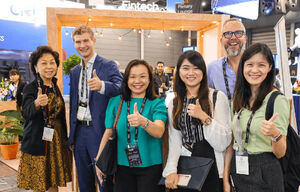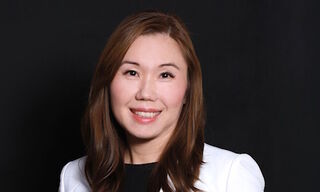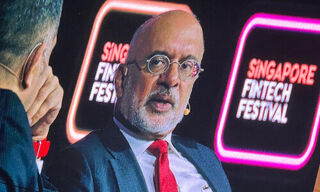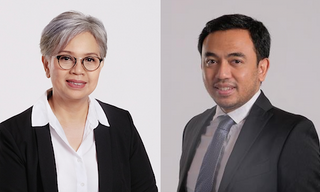Champagne Discoveries by Philipp Schwander, Master of Wine
Let’s talk about other interesting origins: What do you think of Franciacorta?
Similar to Champagne, the prise de mousse occurs via a second fermentation in individual bottles. Due to the high quality of these sparkling wines, Franciacorta is often called the «Champagne of Italy.» Meanwhile, other regions in Italy have also adopted this method, such as Oltrepò Pavese Metodo Classico in Lombardy. You can find excellent products there as well. The challenge with Franciacorta, in particular, is that its pricing is comparable to Champagne. Swiss customers often prefer Champagne at that price point.
… and Spanish Cava?
Cava is also produced using bottle fermentation. Unfortunately, a large portion of Cava is of mediocre quality, with grapes sourced from regions like Extremadura or Calatayud—areas entirely unsuitable for sparkling wine. Ideal for student parties, perhaps, but not for aficionados. However, for those willing to search, there are gems to be found in the Cava world. Recently, a group of quality-focused producers has gained attention for crafting sparkling wines under stricter criteria and marketing them as «Corpinnat.»
«For enthusiasts, English sparkling wines are also a hot tip.»
Many German winemakers take great pride in their sparkling wines.
Rightly so: Germany is the third-largest producer of sparkling wine globally, has a strong sparkling wine tradition, and its climate is well-suited for it. Many people don’t realize that Germans contributed significantly to Champagne’s development. For example, Anton von Müller introduced riddling racks at Veuve Clicquot, and entrepreneurs like Johann-Joseph Krug, Florenz-Ludwig Heidsieck, Peter Arnold Mumm, Wilhelm Deutz, and Joseph Jacob Bollinger played pivotal roles. Up until around 1900, many domestic German sparkling wines were sold as Champagne. That practice was banned in 1919 with the so-called «Champagne Clause» in the Treaty of Versailles. Beyond mass-market options like Henkell Trocken or Rotkäppchen, Germany offers some astonishingly good sparkling wines at attractive prices.
What should one look for when selecting a good sparkling wine?
That’s unfortunately not so simple. By nature, sparkling wine demands a certain price due to its labor-intensive production and required aging. For bottle-fermented sparkling wine, the starting point is around 20 francs. If you’re not willing to pay a premium for the Champagne designation, there are great options elsewhere—even within France. For example, «Crémant» is also made using bottle fermentation and adheres to strict regulations. A hidden gem is the Crémant d’Alsace by Muré, available at Ruli Vins in Allschwil. But as always, tasting is believing!
«A crowd favorite in the Selection Schwander lineup—and indeed a showstopper!—is our Crémant from Château Bauduc in Bordeaux.»
And for Champagne: how much should one budget at minimum?
It’s very unlikely to find a satisfactory Champagne for less than 20 francs. Starting at 30 francs, with some effort, you should be able to find decent options. Beyond the big-name brands, so-called «grower Champagnes» often offer attractive products. These are winemakers who used to supply their grapes to the major houses but have since become independent, crafting their own Champagnes—often at very appealing prices.
Let’s discuss some of the big names. What’s your opinion on Dom Pérignon?
It’s surprisingly good, especially when you consider the enormous production volume—likely exceeding 10 million bottles. It’s a high-quality, smooth, and approachable Champagne. But you’re also paying for the brand. The brilliant Bernard Arnault (LVMH) isn’t one of the world’s wealthiest people for nothing. If you’re a Dom Pérignon fan, I recommend trying Moët & Chandon’s «Grand Vintage» from the same house—it’s much more affordable.

Wine cellar of Ayala in Aÿ-Champagne. (Image: Courtesy)
Krug is often considered the ultimate Champagne.
It’s certainly one of the best Champagnes. However, since Louis Vuitton Moët Hennessy (LVMH) took over, I feel they’re aging the wines for less time. I often find them too young. That said, the initial fermentation is still done in oak barrels, which results in a very complex aroma.
Who else would you rank among the major houses?
Roederer and Pol Roger certainly belong to the greats. I find Bollinger’s vintage Champagnes particularly impressive. Among grower Champagnes, R. Pouillon from Mareuil-sur-Aÿ is outstanding. In terms of négociant houses, Ayala is currently all the rage. Unlike Bollinger, where Pinot Noir dominates, Ayala focuses on Chardonnay. Ayala’s brilliant cellar master, Julian Gout, is currently one of the best in all of Champagne—a true shooting star!
«Champagne's legal team is feared worldwide.»
What other sparkling wine discoveries can you share with us?
A crowd favorite in the Selection Schwander lineup—and indeed a showstopper!—is our Crémant from Château Bauduc in Bordeaux. Its flavor profile lies somewhere between Champagne and Prosecco. It has more complexity than a Prosecco but is also more accessible than a Champagne—a superb aperitif that wins over friends and family in no time. For enthusiasts, English sparkling wines are also a hot tip.
Excuse me?
Yes, it’s surprising... The Paris Basin, which forms the chalky soils of Champagne, doesn’t stop at France. It extends into southern England. Geologically, the soils are comparable to the best sites in Champagne. The most renowned producer is likely Coates & Seely, which we’ve been importing for several years. These products are distributed very selectively and often served at royal receptions in England. They’re also offered by the glass in top English restaurants and even in Paris at Alain Ducasse, the George V, or the Crillon.

Philipp Schwander at lunch with Christian Seely (center) and Nicholas Coates at «Smoking Lobster» in Cowes. (Image: Courtesy)
This is a private project of Christian Seely, director of AXA’s wine group—which manages some of the world’s leading wineries, including Pichon-Baron and Quinta do Noval—and his friend Nicholas Coates. They’ve recently undertaken a spectacular replanting project on the Isle of Wight, which boasts ideal conditions for high-quality sparkling wines. You’ll definitely hear more from this operation in the coming years.
How do their sparkling wines compare to Champagnes in blind tastings?
The Brut Reserve NV easily holds its own against good non-vintage Champagnes.
What will you be drinking this Christmas and New Year’s Eve?
Certainly an excellent Champagne: the 2018 Blanc de Blancs «A/18» by Ayala. Also, definitely our Crémant from Château Bauduc—it’s simply delicious. And for social gatherings, I love serving the high-quality oates & Seely. It always guarantees the element of surprise!
Wine merchant Philipp Schwander has dedicated his life to wine since the age of 16. In 1996, he became the first Swiss to pass the world’s most rigorous wine examination, the Master of Wine. After working for «Martel» in St. Gallen and serving as the head of «Albert Reichmuth» in Zurich, he founded his «Selection Schwander» in 2003. The name has been his mission ever since: Schwander selects excellent, affordable wines outside of the major prestige brands.
- << Back
- Page 2 of 2






















